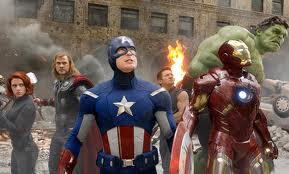|
What do the U.S. Olympics Women's Gymnastics and Swim Teams and The Avengers have in common? They have well-assembled teams that get the job done. Do you have a team that is poised for greatness? Building or leading a successfully sustainable business is no easy feat, but having the right team in place can get you there. For the purpose of this post and in keeping with our area of expertise, let's focus on your marketing team. 1) Take a critical look at your current capabilities. Do you even have a marketing team and if so, is that bench both deep and wide? If you're a sole proprietor, you should stop fooling yourself into thinking you'll find the time to tackle your marketing needs someday. Someday means way down the road when growth opportunities have passed you by. If you have a marketing team, what do they cover? Marketing is more than selling or direct response or advertising. Do you have the right people ensuring - the product set is optimal? - there is a pipeline for new products or services? - consumer insights are being mined? - messaging is on target? - the pricing structure is sound? - sales tactics make sense? - product/service delivery meets customer expectations? - brand delivery is consistent? Surely, this is beyond marketing, you say. Actually this is just the tip of the iceberg for stellar marketing teams. 2) Be discerning about who gets on the team. Time trials and psychological profiles would be overboard, but shouldn't you make sure you have the best people in the right roles? Just because someone has ten years of direct response experience, it doesn't mean that she is your best bet for handling social media. Similarly, that graphic design agency that also purports to be brand experts may not actually fit the bill. Because marketing is such a wide and compartmentalized discipline, it is critical that you look for specific expertise and skills in the area that needs addressing. In the same way combat strategy fell to Captain America or Allison Schmitt is responsible for the freestyle leg, every team member should have a clear role based on a true area of expertise. Don't be put off by so-called one-trick ponies. Sometimes, you need McKayla Maroney to come to London just to do the vault. 3) Set clear expectations and then let them do their thing. Make sure your team clearly understands the mandate. Specifically spell out objectives, KPIs, deliverables, parameters, etc. Give your team your full support and then get out the way. If you've done a great job in assembling the marketing team, you can rest assured they'll bring you the gold. Photos courtesy of London2012.com, washingtonpost.com and IFC.com.
 It can't be said enough. Everything you do, say, show, promote, post, provide, sell, tweet, create .... represents your brand. This is even more true in the era of the internet and viral media. Jack Daniels shows us how even communication from their legal department supports the brand and its promoters. See how the brand responded to an author who used the brand's signature label as inspiration for his book jacket. There are several articles out there covering the story, but here's a source we wouldn't normal cite: The Journal of the American Bar Association. How does legal represent your brand? As a follow-up to our previous post, Gatorade serves as an example of a well-conceived brand restage with results to prove it. We believe their approach works because - they knew what problem needed solving before the rebrand. There is no point to rebranding just for the sake of it. Clear objectives are a must. - they took a long, careful look at their core consumer (C1) and made the difficult decision to focus more specifically on the core's needs. - they respected the roots of the Gatorade brand and considered its role within the company (C2) - they understood that it was crucial to distinguish themselves from competitors (C3) in a truly meaningful way. In short, the Gatorade team kept its eye on all three Cs. Just as important, though, they walked the talk. Everything that the new brand stands for is evident in every part of the business - from the product line to where they advertise. Sound strategy is absolutely critical, but committed execution wins the game. Fast Company (required reading in our office) shares more of the background and particulars in its article, "How to Redefine a Flagging Brand." I just read about another company that has "re-branded" itself. As often happens, this so called "re-branding" amounts to little more than a redesigned logo and a refreshed web presence. Sorry, this is not actually a re-brand.
Let's start at the beginning. What is a brand anyway? At its most basic, a brand is the perception in the minds of its consumers and customers. That perception is driven by a myriad of elements - some which can be directly controlled by the brand owners and some that can't. A few elements that build up to a brand include:
Be forewarned, however, even a fully executed re-branding will not necessarily cure everything that ails a brand. The jury's still out on how well things will go for JCPenney. Your own brand is just a piece - albeit an important piece - of the puzzle. How your consumers/customers react and how your new brand compares to your competition are equally critical. Obvious advice from Hat Trick 3C. We know. |
AuthorBetsy Kirkland, Hat Trick 3C's General Manager, loves branding and marketing so much that she sees opportunities for organizations to strengthen their brands everywhere she turns. AuthorGail Legaspi-Gaull is the founder of Hat Trick 3C. She lives and breathes marketing - sometimes to the consternation of her husband and kids. Archives
February 2013
Categories
All
|

|
|



 RSS Feed
RSS Feed
